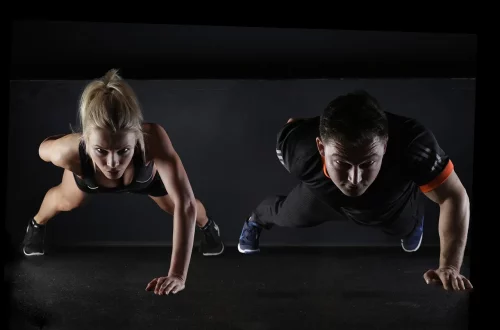
Effective Exercises to Strengthen Your Vastus Medialis Muscle
Strengthening the vastus medialis muscle is crucial for maintaining knee stability and enhancing overall leg strength. This muscle, part of the quadriceps group, is located on the inner part of the thigh and plays a significant role in various movements, including walking, running, and squatting. A well-conditioned vastus medialis contributes not only to athletic performance but also to daily activities, making it an essential muscle to focus on during strength training.
Incorporating targeted exercises can help improve muscular strength and endurance, which can lead to better performance in sports and everyday tasks. Additionally, strengthening the vastus medialis can help prevent injuries, particularly in the knee joint, where imbalances or weaknesses can lead to pain and dysfunction. As individuals engage in physical activities, the demand on the legs increases, making it even more important to ensure that all components of the quadriceps are adequately developed.
This article aims to explore effective exercises that can be integrated into your fitness routine to enhance the strength and functionality of the vastus medialis muscle. By understanding the importance of this muscle and how to properly engage it, individuals can achieve better overall leg strength and stability.
Understanding the Vastus Medialis Muscle
The vastus medialis muscle is one of four muscles that make up the quadriceps, alongside the vastus lateralis, vastus intermedius, and rectus femoris. Its primary function is to extend the knee, and it plays a crucial role in stabilizing the patella (kneecap) during movement. This muscle is particularly important for activities that require knee extension, such as squatting, jumping, and running.
One of the unique features of the vastus medialis is its two distinct parts: the vastus medialis oblique (VMO) and the vastus medialis longus. The VMO is essential for patellar stabilization, particularly during the last few degrees of knee extension. Strengthening this muscle can help alleviate issues related to patellar tracking, which can lead to knee pain and discomfort.
In addition to its anatomical significance, the vastus medialis contributes to the overall aesthetics of the thigh. A well-defined vastus medialis can enhance the appearance of the legs, making it a popular target for individuals looking to improve their physique. However, it’s essential to remember that aesthetics should not be the sole focus; functional strength and injury prevention are paramount.
Understanding the role of the vastus medialis in both athletic performance and daily activities is crucial for anyone looking to improve their leg strength. By recognizing its significance, individuals can tailor their workouts to ensure they are adequately engaging this muscle group. This understanding sets the foundation for exploring specific exercises that target the vastus medialis effectively.
Effective Exercises for Vastus Medialis Strengthening
To strengthen the vastus medialis effectively, a variety of exercises can be incorporated into your training routine. These exercises should focus on knee extension and stabilization, ensuring that the vastus medialis is activated throughout the movement. Below are several effective exercises designed to target this crucial muscle.
1. **Squats**: Squats are a fundamental exercise for overall leg strength and can be modified to emphasize the vastus medialis. To perform a squat, stand with your feet shoulder-width apart. Lower your body by bending your knees while keeping your chest up and back straight. Make sure to push through your heels to return to the starting position. To specifically target the vastus medialis, try performing a narrow squat, where your feet are closer together. This position places greater emphasis on the inner thigh muscles.
2. **Leg Extensions**: The leg extension machine is a fantastic tool for isolating the quadriceps, particularly the vastus medialis. Sit on the machine with your back against the pad and your feet under the padded bar. Slowly extend your legs until they are straight, then lower them back to the starting position. To focus more on the vastus medialis, consider adjusting your foot position slightly inward during the exercise.
3. **Step-Ups**: Step-ups are another excellent exercise for engaging the vastus medialis. Find a sturdy bench or platform and place one foot on it. Push through the heel of the elevated foot to lift your body up onto the platform, bringing the other foot up to meet it. Step back down and repeat. For greater emphasis on the vastus medialis, keep your foot placement slightly inward as you step up.
4. **Wall Sits**: Wall sits are an isometric exercise that can effectively engage the vastus medialis. Stand with your back against a wall and slide down until your knees are at a 90-degree angle, as if sitting in an invisible chair. Hold this position for as long as you can, focusing on keeping your knees aligned with your toes. The isometric contraction will help strengthen the vastus medialis while improving endurance.
5. **Lunges**: Lunges can also be modified to target the vastus medialis. Step forward with one foot and lower your hips until both knees are bent at a 90-degree angle. Ensure that your front knee stays behind your toes. To emphasize the vastus medialis, try performing lateral lunges, where you step out to the side instead of forward. This variation forces the inner thighs to engage more effectively.
Incorporating a combination of these exercises into your routine can contribute to better strength and stability in the vastus medialis. It’s essential to focus on proper form and technique to prevent injury and maximize effectiveness. Gradually increase the intensity and resistance as your strength improves.
Tips for Optimizing Your Workout Routine
To achieve the best results in strengthening the vastus medialis, consider the following tips when designing your workout routine. These strategies will help ensure that you are effectively targeting the muscle while also promoting overall leg strength and health.
1. **Warm-Up Properly**: Before engaging in any strength-training exercises, it’s crucial to warm up your muscles. A proper warm-up can increase blood flow to the muscles, enhance flexibility, and reduce the risk of injury. Incorporate dynamic stretches and light cardio to prepare your body for the workout ahead.
2. **Focus on Form**: Maintaining proper form during exercises is vital for targeting the vastus medialis effectively and preventing injury. Pay close attention to your alignment, especially in exercises like squats and lunges, where improper form can lead to knee strain. Consider working with a trainer if you’re unsure about your technique.
3. **Vary Your Routine**: To keep your workouts engaging and prevent plateaus, vary your exercise routine regularly. This can include changing the order of exercises, adjusting the number of repetitions and sets, or trying new exercises altogether. Incorporating variety will challenge your muscles and promote continued strength gains.
4. **Include Stretching and Recovery**: Flexibility is an essential component of strength training. Incorporate stretching into your routine to maintain muscle elasticity and prevent tightness. Additionally, allow for recovery days to give your muscles time to repair and grow stronger.
5. **Listen to Your Body**: Pay attention to how your body responds to your workouts. If you experience pain or discomfort, especially in the knees, it may be a sign to adjust your routine. Consult with a healthcare professional if you have ongoing issues or concerns about your training.
By following these tips, you can optimize your workout routine to effectively strengthen the vastus medialis muscle while also promoting overall leg health and performance. Remember that consistency is key; regular training and attention to form will yield the best results over time.
**Disclaimer**: This article is for informational purposes only and does not constitute medical advice. Always consult a healthcare professional before starting any new exercise program, especially if you have any pre-existing health conditions or concerns.




